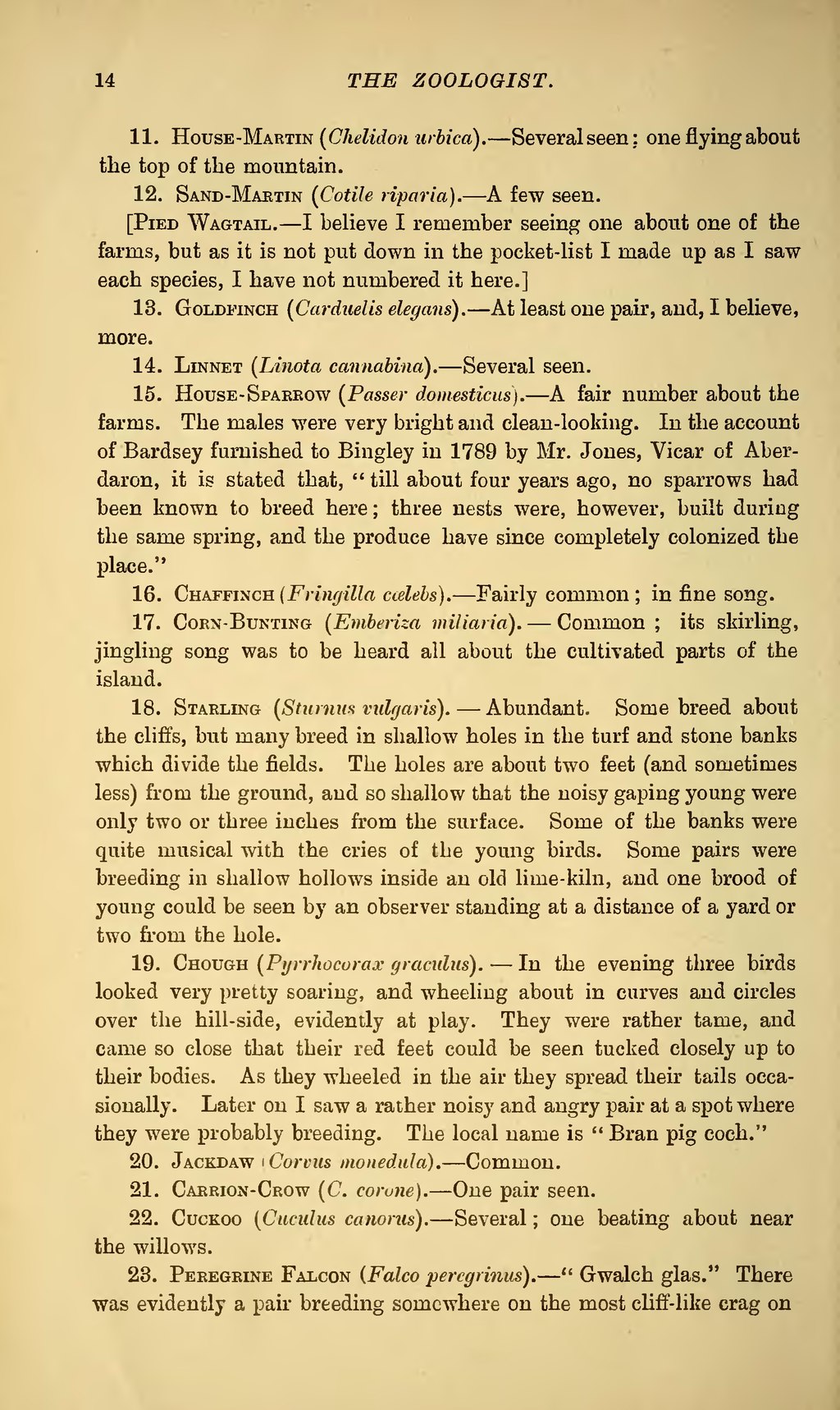11. House-Martin (Chelidon urbica).—Several seen: one flying about the top of the mountain.
12. Sand-Martin (Cotile riparia).—A few seen.
[Pied Wagtail.—I believe I remember seeing one about one of the farms, but as it is not put down in the pocket-list I made up as I saw each species, I have not numbered it here.]
13. Goldfinch (Carduelis elegans).—At least one pair, and, I believe, more.
14. Linnet (Linota cannabina).—Several seen.
15. House-Sparrow (Passer domesticus).—A fair number about the farms. The males were very bright and clean-looking. In the account of Bardsey furnished to Bingley in 1789 by Mr. Jones, Vicar of Aberdaron, it is stated that, "till about four years ago, no sparrows had been known to breed here; three nests were, however, built during the same spring, and the produce have since completely colonized the place."
16. Chaffinch (Fringilla cœlebs).—Fairly common; in fine song.
17. Corn-Bunting (Emberiza miliaria).—Common; its skirling, jingling song was to be heard all about the cultivated parts of the island.
18. Starling (Sturnus vulgaris).—Abundant. Some breed about the cliffs, but many breed in shallow holes in the turf and stone banks which divide the fields. The holes are about two feet (and sometimes less) from the ground, and so shallow that the noisy gaping young were only two or three inches from the surface. Some of the banks were quite musical with the cries of the young birds. Some pairs were breeding in shallow hollows inside an old lime-kiln, and one brood of young could be seen by an observer standing at a distance of a yard or two from the hole.
19. Chough (Pyrrhocorax graculus).—In the evening three birds looked very pretty soaring, and wheeling about in curves and circles over the hill-side, evidently at play. They were rather tame, and came so close that their red feet could be seen tucked closely up to their bodies. As they wheeled in the air they spread their tails occasionally. Later on I saw a rather noisy and angry pair at a spot where they were probably breeding. The local name is "Bran pig coch."
20. Jackdaw (Corvus monedula).—Common.
21. Carrion-Crow (C. corone).—One pair seen.
22. Cuckoo (Cuculus canorus).—Several; one beating about near the willows.
23. Peregrine Falcon (Falco peregrinus).—"Gwalch glas." There was evidently a pair breeding somewhere on the most cliff-like crag on
